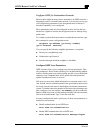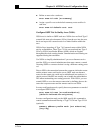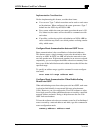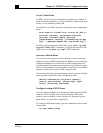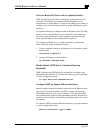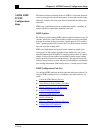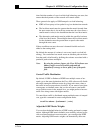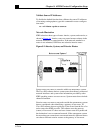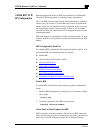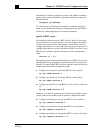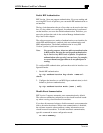
Chapter 8: AI2524 Protocol Configuration Steps
August 1997 Page 8-11
2524UM
AI2524 IGRP
TCP/IP
Configuration
Steps
The Interior Gateway Routing Protocol (IGRP) is a dynamic distance-
vector routing protocol for an autonomous system that contains large,
arbitrarily complex networks with diverse bandwidth and delay char-
acteristics.
IGRP uses a combination of user-configurable metrics, including in
ternetwork delay, bandwidth, reliability, and load.
IGRP Updates
By default, a router running IGRP sends an update broadcast every 90
seconds. It declares a route inaccessible if it does not receive an update
from the first router in the route within 3 update periods (270 seconds).
After 7 update periods (630 seconds), the Cisco IOS software removes
the route from the routing table.
IGRP uses flash update and poison reverse updates to speed up th
convergence of the routing algorithm. Flash updates are sent soone
than the standard periodic update for notifying other routers of a metric
change. Poison reverse updates are intended to defeat larger routing
loops caused by increases in routing metrics. The poison reverse up-
dates are sent to remove a route and place it in holddown, which keeps
new routing information from being used for a certain period of time.
IGRP Configuration Task List
To configure IGRP, perform the tasks outlined in the next section. Cre-
ating the IGRP routing process is mandatory; the other tasks are op
tional.
z
Create the IGRP Routing Process
z
Allow Point-to-Point Updates for IGRP
z
Define Unequal-Cost Load Balancing
z
Control Traffic Distribution
z
Adjust the IGRP Metric Weights
z
Disable Holddown
z
Enforce a Maximum Network Diamete
z
Validate Source IP Addresses




